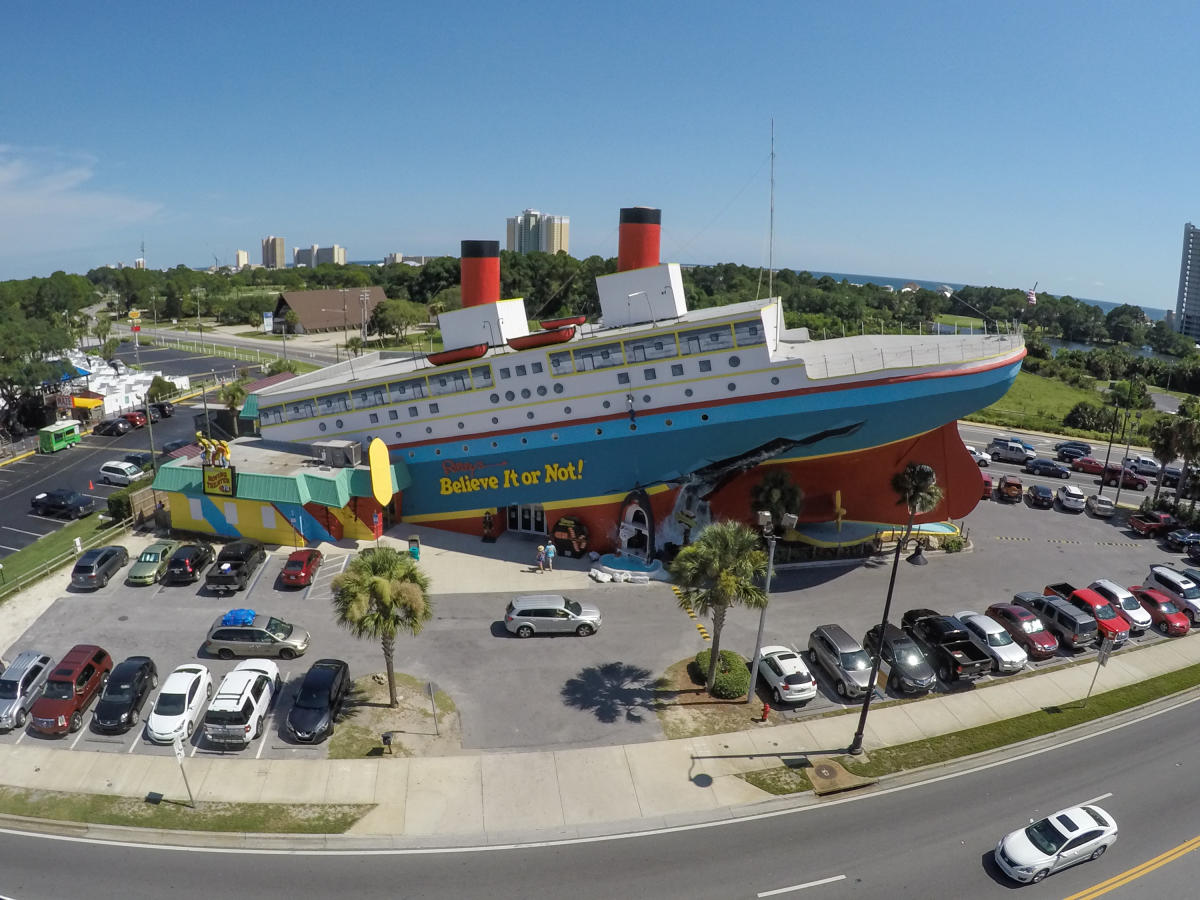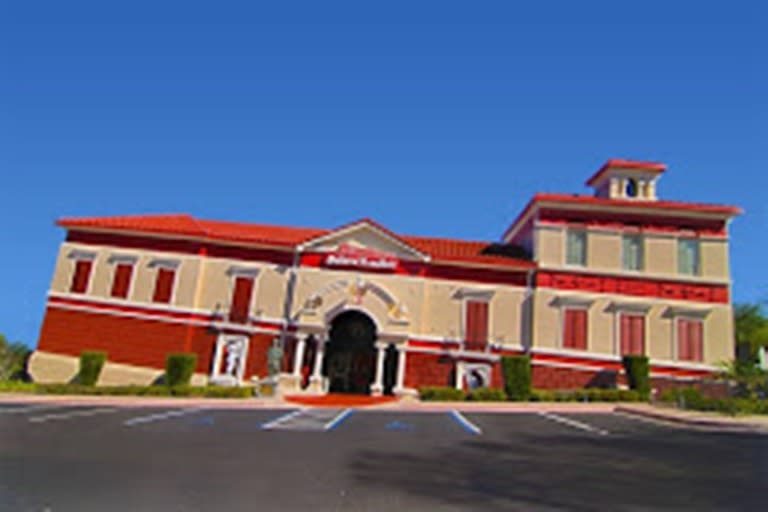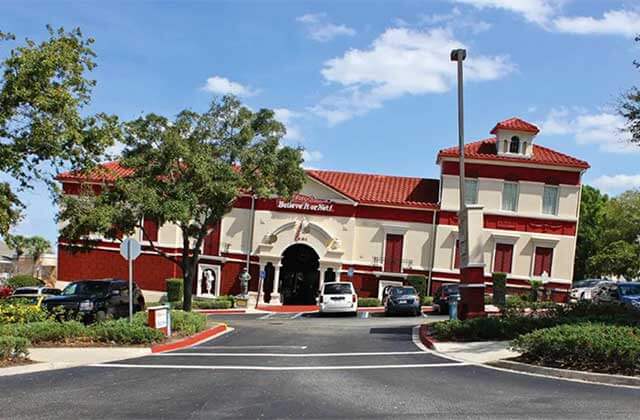
Beyond Belief: A Journey Through the Marvels and Mysteries of Florida’s First Ripley’s Odditorium
Beyond the sun-drenched beaches and historic cobblestone streets of St. Augustine, Florida, lies a portal to the extraordinary, a testament to the unbelievable, and a monument to human curiosity. Here, nestled within the striking architecture of a bygone era, stands the very first permanent Ripley’s Believe It or Not! Odditorium – a place where the bizarre is celebrated, the impossible made tangible, and the line between fact and fiction delightfully blurred. More than just a museum, the St. Augustine Odditorium is an immersive journey into the mind of a true visionary, Robert Ripley, and a vibrant exploration of the world’s most astonishing wonders.
From the moment one approaches the imposing facade of Castle Warden, the Odditorium’s historic home, a sense of anticipation begins to build. Built in 1887-1888 as a winter residence for wealthy Bostonian William G. Warden, the building itself is an oddity in St. Augustine’s Spanish colonial landscape, with its Moorish Revival and Spanish Renaissance architectural influences. It later served as a hotel before Robert Ripley, the ultimate collector of the curious, acquired it in 1949. Opening its doors in 1950, just a year after Ripley’s death, this location became the spiritual heart of his global empire of oddities, a physical manifestation of his life’s work: to prove that truth is indeed stranger than fiction.
The man behind the phenomenon, Robert LeRoy Ripley, was a quintessential American eccentric, an artist, explorer, and showman. Born in Santa Rosa, California, in 1890, Ripley began his career as a sports cartoonist. In 1918, he published his first "Believe It or Not!" panel, featuring unusual sports facts. Its immediate popularity spurred him to broaden his scope, delving into history, science, and the furthest reaches of human and natural anomalies. Ripley traveled to over 200 countries, collecting stories, artifacts, and photographs, all while meticulously verifying each claim. His mantra, "I have traveled in 201 countries and the strangest thing I saw was man," encapsulates his lifelong fascination with the diversity and extremes of human existence. He believed in presenting facts, no matter how outlandish, and empowering his audience to decide for themselves.

Stepping inside the St. Augustine Odditorium is like entering a labyrinth of wonder, a dimly lit cabinet of curiosities where every turn reveals something new to astound and bewilder. The layout encourages exploration, with themed rooms and corridors guiding visitors through a curated collection that spans centuries and continents. The exhibits are broadly categorized, but their true power lies in their ability to defy easy classification, blending art with science, history with folklore, and the genuinely unbelievable with the hilariously strange.
One of the most iconic and often unsettling categories of exhibits involves biological anomalies and natural wonders. Here, visitors encounter two-headed calves, a shrunken head (tsantsa), and various taxidermied creatures that challenge one’s understanding of anatomy. The shrunken head, while perhaps the most notorious and often misunderstood of Ripley’s acquisitions, offers a glimpse into the complex cultural practices of the Jivaroan peoples of Ecuador and Peru. Ripley acquired them from legitimate sources, and they serve as a stark, if unsettling, reminder of the vast differences in human tradition across the globe. These displays, while sometimes macabre, underscore Ripley’s commitment to showcasing the sheer unpredictability of nature.
Beyond the natural world, the Odditorium delves deep into the realm of human achievement and physical peculiarity. Stories and effigies of the world’s tallest man, Robert Wadlow, whose life-size replica towers over visitors at 8 feet 11 inches, stand alongside the incredible tales of individuals who pushed the boundaries of what the human body can endure. Accounts of sword swallowers, fire eaters, and escape artists are presented not as mere sideshow acts, but as feats of extraordinary skill and discipline. The Odditorium respectfully presents these individuals, focusing on their unique abilities and the awe they inspire, rather than sensationalizing their differences. It’s a powerful reminder that "normal" is a fluid concept, and true wonder often lies in embracing the unique.
Perhaps the most delightful category of exhibits showcases human ingenuity and artistic brilliance born from unconventional materials. Here, visitors might find a portrait of a celebrity made entirely from pieces of toast, a miniature city painstakingly carved from matchsticks, or intricate sculptures crafted from dryer lint or chewing gum. These displays highlight the boundless creativity of the human spirit, demonstrating that art can be found and created from anything imaginable. The attention to detail in these pieces is often breathtaking, prompting gasps of disbelief and admiration. One might encounter a replica of a car made from actual car parts, but shrunk to an absurdly small size, or delicate micro-sculptures so tiny they require a magnifying glass to appreciate, proving that grand statements can be made on the smallest of canvases.
The Odditorium is also a treasure trove of historical artifacts and cultural curiosities, transporting visitors to different eras and distant lands. Ancient torture devices, genuine meteorites, and peculiar inventions from history sit alongside more contemporary oddities. There’s a piece of the Berlin Wall, a fragment of a dinosaur bone, and countless artifacts that tell a story of human history, ingenuity, and sometimes, folly. Each item comes with a concise, engaging explanation, offering just enough information to pique curiosity without overwhelming the visitor.
A crucial element of the Ripley’s experience, especially in St. Augustine, is the interactive and illusion-based exhibits. Mirror mazes challenge perception and spatial awareness, creating a disorienting yet fun experience. Optical illusions trick the eye and the mind, forcing visitors to question what they see. These playful elements serve as a bridge, making the sometimes-serious themes of human oddity and natural wonder accessible and engaging for all ages. They are a physical manifestation of Ripley’s core philosophy: to make people question, to make them think, and ultimately, to make them believe.
What is it about the Ripley’s Odditorium that continues to captivate generations in an age where the world’s most incredible phenomena are just a click away? Part of its enduring appeal lies in its tangible nature. While a video of a two-headed animal is intriguing, standing before a preserved specimen, seeing its details, and grasping its scale provides a far more visceral and unforgettable experience. The Odditorium offers a tactile connection to the unbelievable, a rare commodity in our increasingly digital world. It’s a place where one can truly "see it to believe it."
Furthermore, the St. Augustine Odditorium, housed within the atmospheric Castle Warden, benefits immensely from its historical setting. The building’s original charm, its winding staircases, and the palpable sense of history add layers of mystique to the exhibits. It feels less like a modern attraction and more like a grand, eccentric collector’s home, inviting visitors to uncover secrets hidden within its ancient walls.

The legacy of Robert Ripley and his Odditoriums is not merely about collecting strange objects; it is about celebrating the extraordinary in the ordinary, the bizarre in the mundane, and the vastness of human and natural diversity. It encourages an open mind, a willingness to question, and a profound sense of wonder. In a world that often seeks to categorize and normalize, Ripley’s reminds us that there is immense beauty and fascination in the things that defy explanation, that break the mold, and that truly make us say, "Believe It or Not!"
As visitors exit the St. Augustine Odditorium, perhaps a little disoriented, definitely enlightened, and certainly entertained, they carry with them not just memories of strange sights, but a renewed appreciation for the sheer, bewildering variety of existence. The first permanent Ripley’s Believe It or Not! Odditorium stands not just as a monument to oddities, but as an enduring testament to the human spirit’s insatiable hunger for discovery, and the profound, humbling truth that the world is, and always will be, a wonderfully strange place. And that, truly, is something to believe.


